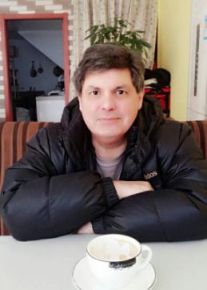In the world’s first, Chinese’s researches in China, have performed precise "chemical surgery" on human embryos to remove disease.
Out of the three billion "letters" of our genetic code a team of researchers at Sun Yat-sen University used a technique called base editing to correct a single error.
They altered lab-made embryos to remove the disease beta-thalassemia. The embryos were not implanted.
The team says the approach may one day treat a range of inherited diseases. This research is on the forefront of locating inherited errors and correcting them chemically.
Base editing alters the fundamental building blocks of DNA: the four bases adenine, cytosine, guanine and thymine.
They are commonly known by their respective letters, A, C, G and T.
All the instructions for building and running the human body are encoded in combinations of those four bases.
According to the researchers the potentially life-threatening blood disorder beta-thalassemia is caused by a change to a single base in the genetic code - known as a point mutation. These point mutations cause many life threatening inherited disorders.
The team in China have discovered a way to edit them back.
The researchers scanned the DNA for the error in the disease beta-thalassemia then converted a G to an A, correcting the genetic fault.
The team of researchers are the first to demonstrate the feasibility of curing genetic disease in human embryos by the base editor system.
The study opens new avenues for treating patients and preventing babies being born with beta-thalassemia, and other inherited diseases.
The experiments were performed in tissues taken from a patient with the blood disorder and in human embryos made through cloning. Their research is revolutionizing science using base editing an advance on a form of gene-editing known as Crispr.
When the body tries to repair a genetic break, it deactivates a set of instructions called a gene. It is also an opportunity to insert new genetic information into the gene.
Base editing works on the DNA bases themselves to convert one into another. The researchers describe the approach as "chemical surgery".
The new technique is more efficient and has fewer unwanted side-effects than Crispr. They have stated that about two-thirds of known human genetic variants associated with disease are point mutations. Base editing has the potential to directly correct, or reproduce for research purposes, many pathogenic mutations.
The research group at Sun Yat-sen University in Guangzhou hit the headlines before when they were the first to use Crispr on human embryos.
Some Americans are critical of the Chinese researchers and question why they did not do more animal research before jumping to human embryos.
The critics are also using the Chinese scientific advancements as the latest example of the rapidly growing ability of scientists to manipulate human DNA. It provokes deep ethical and societal debates about what is and is not acceptable in efforts to prevent disease.
The critics are now calling for international regulations to be put in place on how future research is conducted on human embryos. In the meantime, there will be far more debates, covering the ethics, and how this genetic research on the human genome should be regulated.
In many countries, including China, mechanisms do need to be established for regulation, and for long-term oversight on how genetic research is being conducted on a global scale.
But I suppose only time will tell …….
- Always with love from Suzhou, China
Thomas F O’Neill
- WeChat - Thomas_F_ONeill
- U.S. voice mail: (800) 272-6464
- China Cell: 011-86-15114565945
- Skype: thomas_f_oneill
- Email: introspective7@hotmail.com
- Other articles, short stories, and commentaries by Thomas F. O'Neill can be found on his award winning blog, Link:
http://thomasfoneill.blogspot.com






No comments:
Post a Comment